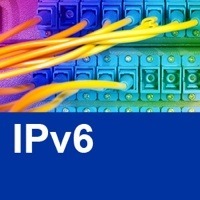 Whereas IPv4 had two basic methods for obtaining an IP address, IPv6 has three. Static configuration is basically the same in both protocols, although less relevant for IPv6 given the length of the address. DHCP is also there for both protocols, and IPv6 DHCPv6 is described in RFC 3315.
Whereas IPv4 had two basic methods for obtaining an IP address, IPv6 has three. Static configuration is basically the same in both protocols, although less relevant for IPv6 given the length of the address. DHCP is also there for both protocols, and IPv6 DHCPv6 is described in RFC 3315.
Introducing SLAAC
The new method that IPv6 introduces is called Stateless Address Autoconfiguration(SLAAC), and described in RFC 4862. SLAAC works by combining part of the address from an interface’s gateway, learned via Router Advertisements(RAs), and an interface’s layer 2 address with “ff:fe” shoved in the middle of it.
In practice, this generally means that using SLAAC an interface’s address will be composed of; the first 64 bits of its gateway’s address, plus the higher 24 bits of its Ethernet MAC, plus 16 hardcoded bits of “ff:fe”, plus the lower 24 bits of its MAC address. IPv6 addresses are 128 bits, and 64 + 24 + 16 + 24 = 128.
As an example, let’s say an interface’s gateway had the address 2001:db8::1, and the interface’s MAC address was 01:23:45:67:89:ab. This would result in an IPv6 address of 2001:db8::123:45ff:fe67:89ab.
It’s easier to understand if you write it out in long form.
2001:db80:0000:0000:0000:0000:0000:0001 Gateway 0123:4567:89ab MAC 0123:45ff:fe67:89ab MAC after padding 2001:db80:0000:0000:0123:45ff:fe67:89ab Final IP address
You’re being followed
MAC addresses are unique, as in globally unique, as in the Ethernet interface in your computer has a MAC address that doesn’t exist anywhere else in the world. If you have a wired and a wireless connection in your computer, your computer has two unique MAC addresses. This is partly why SLAAC works. By using an interface’s MAC address as part of its IPv6 address we ensure a unique IPv6 address is generated every time.
However, the problem with uniqueness is that it can also work as an identifier. When IPv6 was conceived in the mid-90s the Internet wasn’t composed of so many mobile devices like it is today. Also, the combination of the words ‘privacy’ and ‘computer’ weren’t as salient nor contentious as they are today.
Your mobile phone most likely has a MAC address, and will need an IPv6 address if it doesn’t already have one. If your operator is using SLAAC then you can be tracked using the last 48 bits of your IPv6 address because it’s unique. Websites that you visit can see that you have a new IP address, because you have roamed to a new operator, they can also see that the last 48 bits of the address stay the same every time. Hence, every website you visit will know your device regardless of what network you’re on. You can be easily tracked across providers.
This problem was resolved by issuing an update to the SLAAC protocol called “Privacy Extensions for Stateless Address Autoconfiguration in IPv6”, which is codified in RFC 4941. Basically, your computer’s Ethernet interface no longer uses its MAC to fill in the last 48 of its IPv6 address. Instead it picks a series of bits randomly, and fills in the last 48 bits with the random bits.
DAD will Know
The astute reader will see an immediate problem with this. How can we ensure uniqueness when we use any random bits? What happens if two interfaces on the same network segment choose the exact same random bits as each other? The answer is IPv6 Duplicate Address Detection(DAD), specified in RFC 4429. DAD is a subset of IPv6 Neighbor Discovery Protocol(NDP), specified in RFC 4861. DAD listens to network traffic to see if anyone is using an address, so in the relatively unlikely event that two interfaces on the same segment choose the same IPv6 address, DAD will know.
Another great thing about Privacy Extensions for SLAAC(RFC 4941) is that addresses time out. After a configurable time period, interface addresses will become deprecated, and no longer be used by the interface. Typically this period is a day. Meaning the interface will receive a new IP address every day. This makes it even harder to correlate a single user to a given MAC, or even IP address.
Support for IPv6 SLAAC Privacy Extensions
As of this writing the following operating systems support Privacy Extensions for SLAAC(RFC 4941):
- All versions of Windows after Windows XP
- All versions of Mac OS X from 10.7 onward
- All versions of iOS since iOS 4.3
- All versions of Android since 4.0 (ICS)
- Some versions of Linux*
*I have setup RFC 4941 addresses on Debian Linux, so I can testify to it working. Assuming IPv6 networking is already enabled and working, adding “privext 2” to your interface specification in “/etc/network/interfaces” should do the trick.
If you would like to get started with IPv6, please visit our IPv6 resources or begin with our “Start Here” page to help find resources most appropriate for your type of organization. If you have an IPv6 case study you think we should consider for inclusion on our site, please contact us – we are always looking for more!